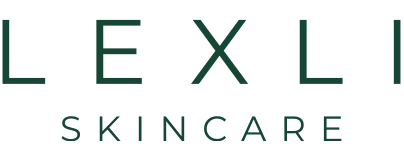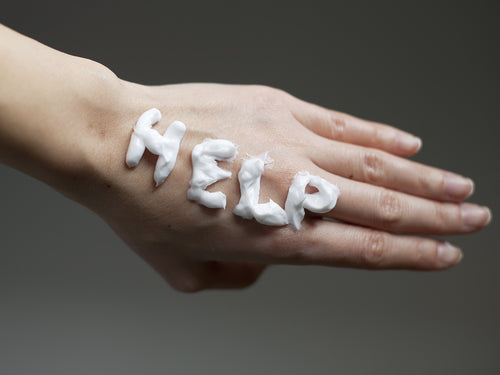Trans-epidermal water loss, or TEWL, is an essential concept to understand when considering skin dryness. Although often overlooked, TEWL is one of the main reasons why moisturizing the skin regularly - and with the right products - is a crucial step in keeping skin comfortable and hydrated.
What is Trans-epidermal Water Loss?
Trans-epidermal water loss occurs when the outermost layer of our skin, the epidermis, loses water to the surrounding air through evaporation. In fact, each day, the skin loses approximately one pint of water through this process.
In a fairly humid environment, water evaporation from the skin is slow, and the body can readily replenish the water lost to the air. However, when water evaporates faster than the body can replace it, such as during winter and in dry climates, the skin becomes dehydrated, which can lead to irritated, rough and/or itchy skin that can crack and cause discomfort. As the skin begins to show signs of dryness, TEWL accelerates even further because the skin's barrier function is further limited.
How Do You Minimize Trans-epidermal Water Loss?
Optimizing the skin’s moisture levels is vital to overall skin function and an important element in ensuring a youthful appearance. To achieve proper skin hydration and treat dry skin, internal and external factors must be considered.
We all know that meeting our water intake goals each day is beneficial to the body. Water aids in digestion, regulation of body temperature, transportation of nutrients and much more. While the jury is still out on whether drinking water directly improves skin hydration, we do know that it certainly can't hurt.
Ensuring adequate water consumption, however, doesn’t prevent TEWL. If anything, the more water content in the skin, the greater the opportunity for TEWL to occur.
The use of topical skincare products allows us to externally slow the rate of water loss. For best results, it's important to use moisturizers that contain three key categories of ingredients:
1. Humectants

Among the effective humectants used in moisturizers are propylene glycol, hyaluronic acid and sorbitol - substances that naturally attract water. When used in humid conditions, humectants pull water from the environment to the skin. In dry environments, humectants draw moisture from the deeper layer of skin (the dermis) to the outermost layer (the epidermis). However, all of the extra moisture that humectants bring to the epidermis could easily evaporate. This is where occlusives come in.
2. Occlusives

Common occlusives include petrolatum, caprylic/capric triglyceride and beeswax. These substances are hydrophobic (repel water) and, as such, create a barrier through which water cannot pass. By applying a moisturizer with quality occlusives to the skin, the skin retains its water content. (With certain occlusives on the skin, the rate of TEWL can decrease by up to 98%!)
3. Emollients

Emollients include ingredients like isopropyl palmitate, dimethicone and jojoba seed oil. These substances help keep the skin smooth, flexible and lubricated. Emollient constituents found naturally in the skin’s oils, such as lipids and fatty acids, play important roles in the skin’s architecture. In moisturizers, they improve the feel and comfort of the skin while greatly reducing water loss.
Additional Tips to Slow Trans-epidermal Water Loss:
- TEWL is accelerated when the skin’s barrier function is disrupted. Therefore, the amount of water that comes into contact with the skin should be limited. Water dilutes and washes away skin oils that act as natural occlusives to keep water in the epidermis. High water temperature can also increase water loss, as it opens the skin’s pores, allowing more moisture to evaporate. Shorter, cooler showers and baths are recommended for optimal skin hydration.
- Avoid strong soaps. Heavy-duty soaps and cleansers with high pH levels can rapidly diminish the skin's supply of natural oils leaving moisture in the epidermis free to evaporate. Rather, turn to gentle cleansers, like Complete Cleanser or glycerin bars.
- In dry climates or during dry seasons, use a cool-mist humidifier in your home or office. Trans-epidermal water loss is slower in humid environments.
- Reapply lotions and moisturizers regularly to ensure that skin stays protected. This is especially important after washing hands or cleansing the face or body.
When it comes to skincare products, ingredients are everything. Like all our products, Lexli moisturizers only use ingredients of the highest quality, including a concentrated base of aloe vera, a powerful, natural humectant. In terms of facial moisturizers:
- Those with normal-to-dry skin benefit from Lexli Ultimate Face Cream, which features a high concentration of humectants, occlusives and emollients.
- Those with normal- to slightly-dry skin, as well as those living in humid climates, will appreciate Simply Hydration lightweight moisturizer, which slows water loss and leaves skin feeling comfortable, not greasy.
- For those with oily skin, consider Balanced Hydration, which minimizes trans-epidermal water loss while leaving skin with a matte appearance that reduces the appearance of shine.
- Finally, to treat dry skin on face and body, we recommend Ultimate Hand & Body Cream.




